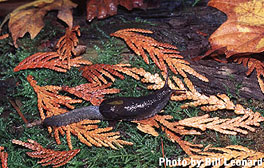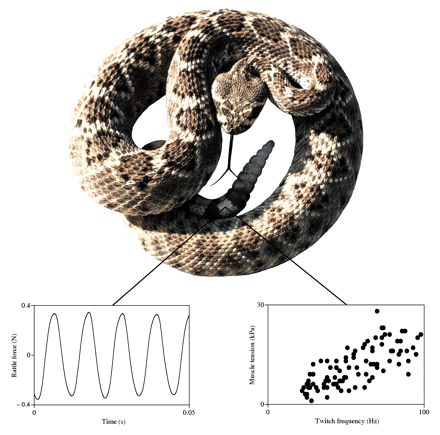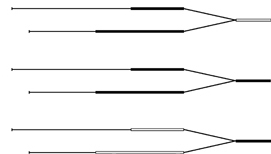 Jumping slugs!
Jumping slugs! Energetics and mechanics of muscle contraction
Energetics and mechanics of muscle contraction
My major research interests focus on the mechanisms and evolution of animal movement. I am particularly interested in how muscles work in natural behaviors. Muscles are versatile motors. They can pull against each other and against their tendons in complex ways. They can act as accelerators or brakes, and their tendons can act as springs that recycle energy. These mechanisms can also interact in ways that enhance strength and reduce cost.
 Muscle-tendon networks
Muscle-tendon networks
For many years, I have been studying how the complex muscle-tendon networks of snakes are used to produce and control movements that differ in speed, strength, and duration. The behaviors I have been studying include snake locomotion, constriction, and swallowing. See some of the study species (opens in new window).
Snakes are uniquely interesting models for this kind of integrative research. Their simplified body form constrains their movements to bending and twisting, but their complex musculature supports a diversity movements and behaviors. For example, snakes use at least five distinct kinds of locomotion, as well as a variety of prey capture and feeding movements, such as striking, constriction, and swallowing. These behaviors require different speeds, strengths, and ranges of motion, but are all produced by the axial muscles and skeleton. Most of my current research addresses the relationships among muscle anatomy, mechanics, and energetics in muscles. Snakes are excellent models for studying these things, because the spinal muscles interact in complex ways that can enhance contractile performance, and the tail muscles in many species can sustain high levels of exercise without becoming fatigued. Muscles such as these can show particularly clear relationships among anatomy, mechanics, and physiology that are difficult to measure in other groups of muscles.Small shrimp, big journey (picture to come...)
My research is not just restricted to vertebrates. With Ray Bauer and Jim Delahoussaye, I am studying the migration of juvenile Ohio shrimp (Macrobrachium ohione) up the Atchafalaya River every fall. These incredible little shrimp hatch in brackish marshes on the Louisiana coast and swim upstream by the millions as far as they can go. We're studying how they do that. Historically, they used to make it from the Gulf Coast to the Ohio River, which pretty remarkable for such shrimpy (inch-long) shrimp! For more information, see Dr. Bauer's website about this project (opens in new window). And stay tuned for more about this project in the near future.
 Jumping slugs!
Jumping slugs!
![]()
Louisiana is a great place to be a biologist, especially a field biologist (or a lab biologist who likes to go on field trips). Here are links to photographs showing some biology in Louisiana:
Our study species in the lab (opens in new window).
Amphibians of Louisiana (opens in new window).
Birds of Louisiana (opens in new window).
More photo galleries to come soon (Louisiana reptiles, miscellaneous animals, and habitats).
![]()
Laboratory facilities
In general, my lab is set up for the following kinds of research:
![]()
|
|
|
|
|
|
|
|